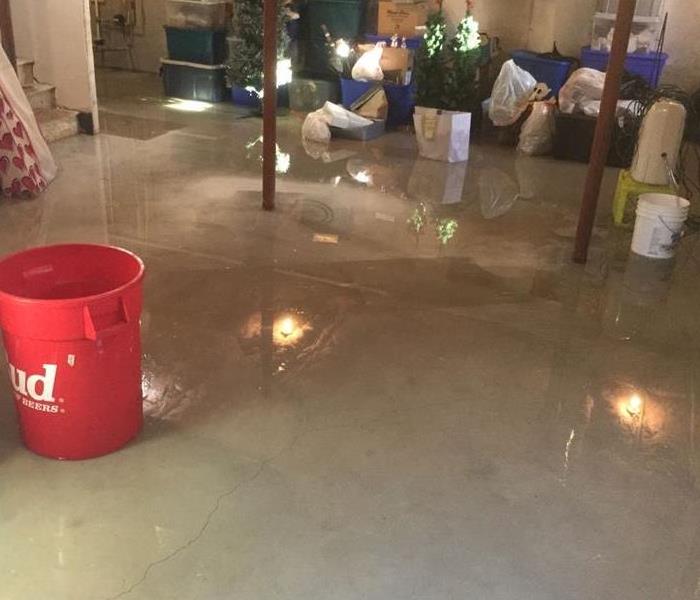Avoid a flooded basement, this year and forever!
1/22/2021 (Permalink)
Weather in Massachusetts is unpredictable, so even if you don’t have a lot of snow now, you never know what Mother Nature has in store for the rest of the season.
In late winter and early spring, the ground can’t absorb all of the rain and snow melt, so it flows along the foundation. Foundation cracks that weren’t a problem before have the potential to become a huge problem now. A proper drain system, sump pump and sealed cracks will help you avoid problems this spring.
Here are a few simple tips:
- Keep your gutters clean (this will keep rainwater from flowing directly to your foundation)
- Grade landscaping away from foundation (add mulch or soil at an angle, higher at the foundation, slanting away)
- Check your sump pump or purchase a submersible pump and fans.
Move valuables and expensive items you may have in your basement or use pallets and shelves to keep them elevated.
When there is a natural disaster, often the emergency items you need are sold out, so plan ahead.
If you do have a flood
There are still things you can do to mitigate the damage.
- If you can do it safely, turn off the electricity.
But don’t get electrocuted! If you can reach the breaker without standing in water turn it off.
- If you’ve got just a bit of water in spots consider yourself lucky. If you can clean it up with a wet vac and have fans to dry it afterward you might be all set.
- If your basement has flooded more than an inch, it’s best to call us.
If you have a sump pump and fans, you may still wish to tackle the job by yourself. Submersible water pumps work best when you place them in the deepest part of the flooded water. If dirt and debris build up and clogs the screen around the pump, clean it out and consider using something like a small tool to prop it up a bit. This will increase the space for water to flow through the pump. Use the widest and shortest hose possible, this will enable the pump to work faster.
When all the water is up, and it appears dry you may still want us simply to treat the previously flooded area to kill any mold before it’s an issue.
To avoid this problem next year, you must identify where the water came in.
- First, seal the cracks.
- Then, dig to avert water flow next time.
Remember water will travel down the path of least resistance. It is strongly advised to dig outside near the foundation and repack the soil. Dig down to where the water came, and then dig out and to the sides a few feet. There is a channel that you may not see but you will disturb and avert if you do this. Next year, water will not flow in that same direction if done correctly.
Last but not least, having a dehumidifier in any basement, old or new, is a must to help reduce the amount of excess moisture in the air.
Recap:
- Clean your gutters.
- Have a sump pump, wet vac and fans.
- Fix lawn grading.
- Seal the cracks.
- Dig to avert water flow next year.
- Have a dehumidifier.
If water comes in and it’s too much to tackle yourself, call us. Mitigating water damage is one of our core competencies. We’ll tackle the job at hand and be sure your water problem doesn’t become a mold problem later.




 24/7 Emergency Service
24/7 Emergency Service
